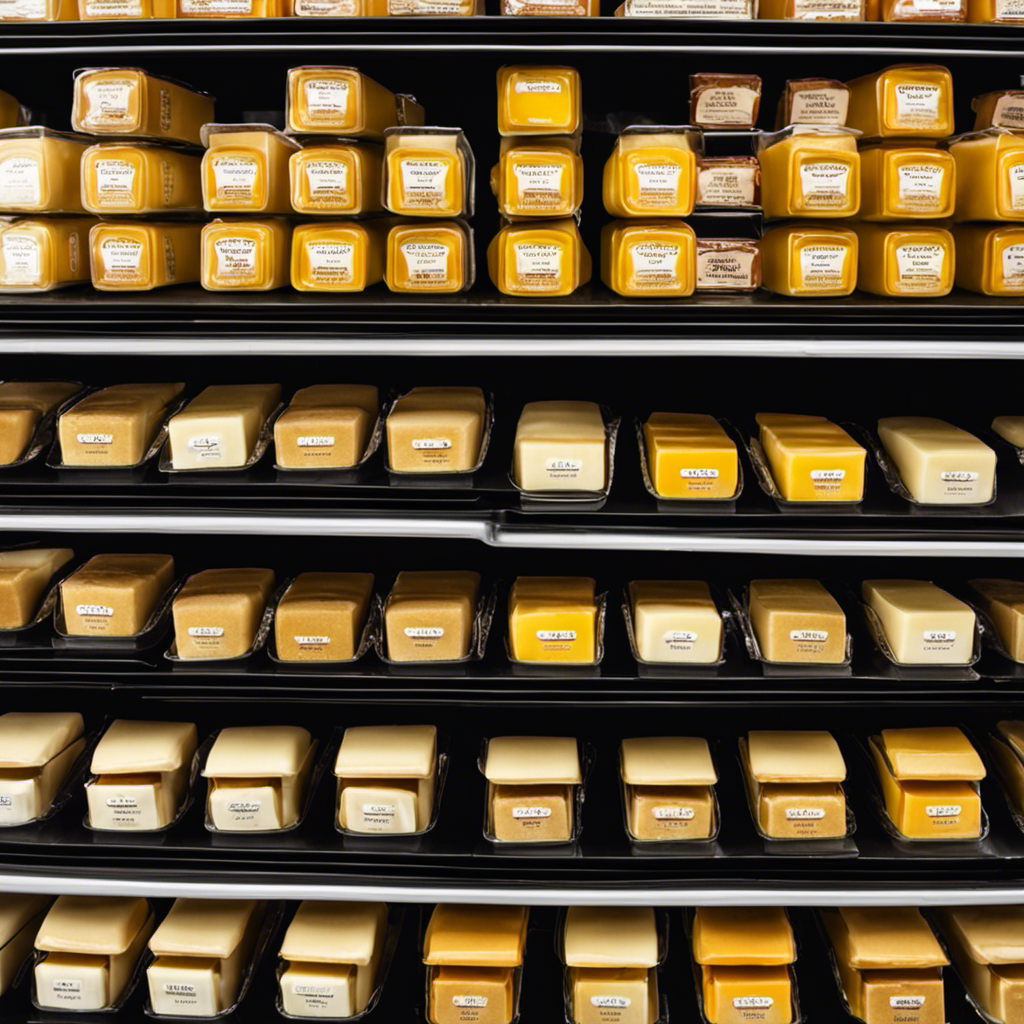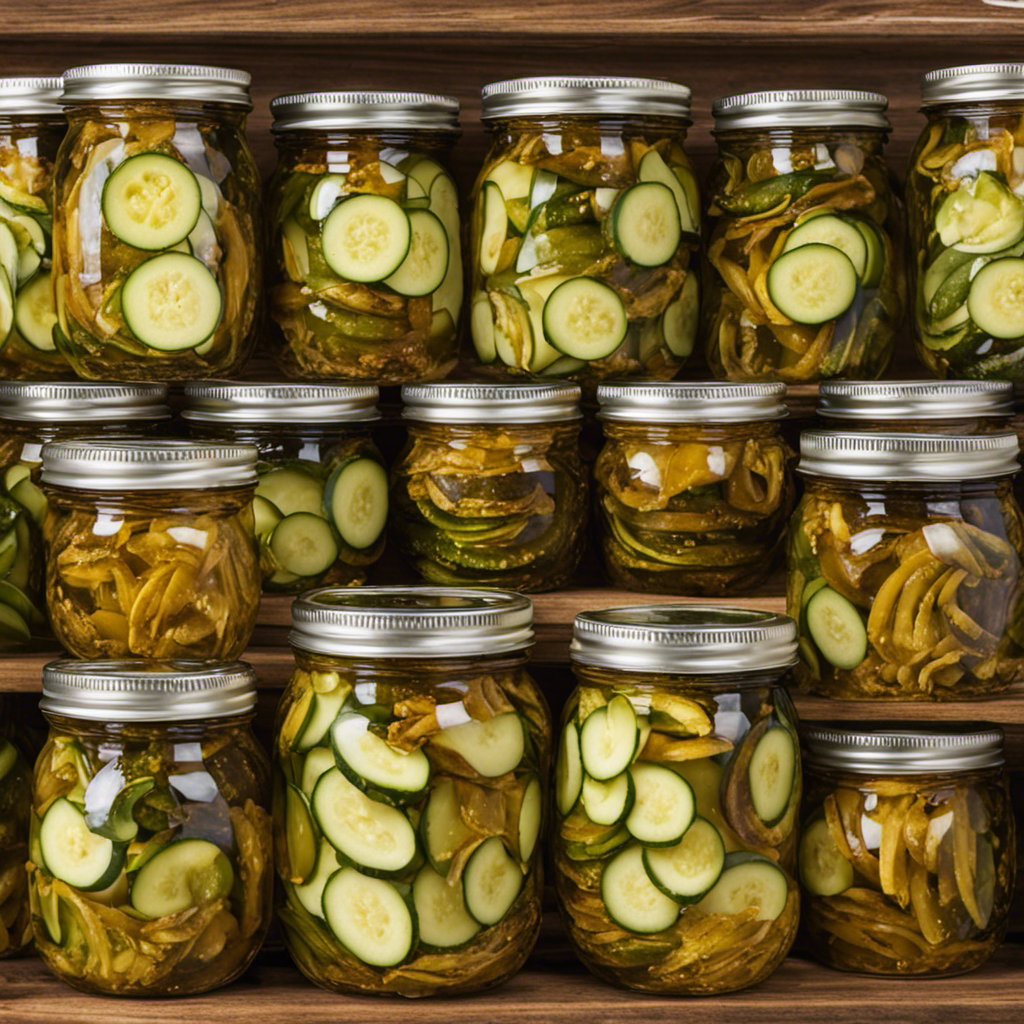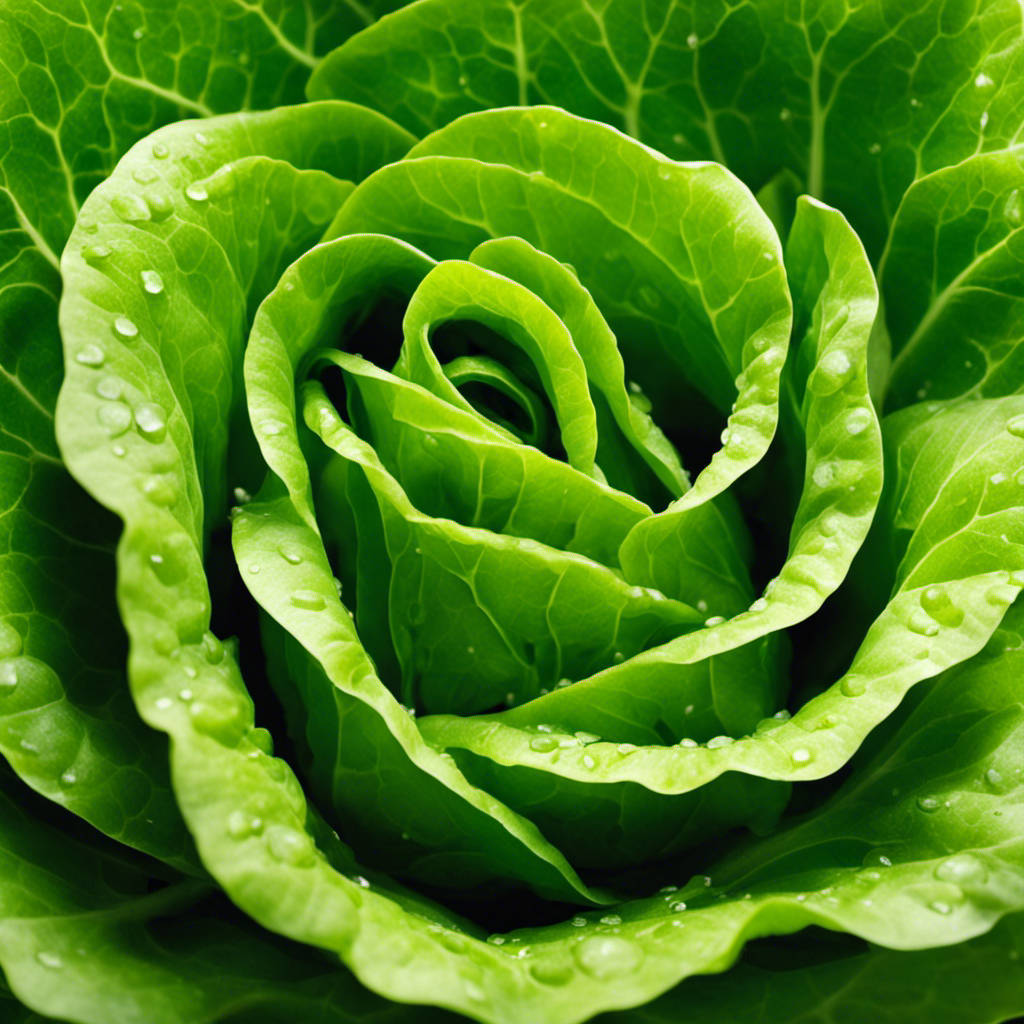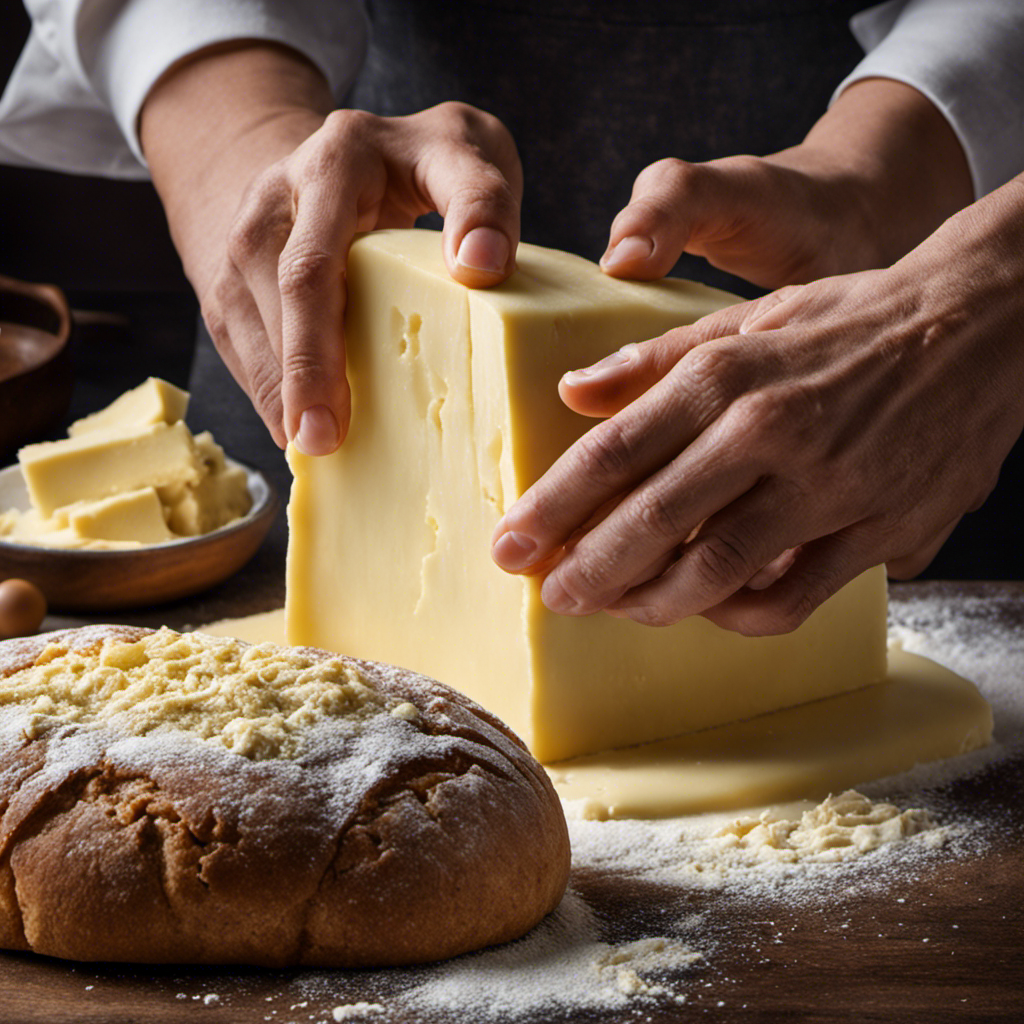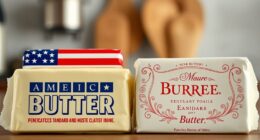I am truly passionate about butter. Honestly, I just can’t get enough of it. seriously
But here’s the thing – sometimes I just need a small portion, you know? So, I did some digging and found out all the best places to buy individual butter portions.
From local supermarkets to online retailers, specialty food stores to convenience stores, I’ve got you covered.
Get ready to indulge in buttery goodness like never before.
Key Takeaways
- Local supermarkets, grocery stores, and specialty food stores offer individual butter portions for convenience and varied options.
- Online shopping provides a wider selection of butter portions, the ability to compare prices, and the convenience of doorstep delivery.
- Farmers markets, organic food markets, and bulk stores offer butter options that support local farmers, promote sustainable agriculture, and provide cost savings.
- Convenience stores and gas stations are convenient options for quickly accessing individual butter portions, especially for on-the-go situations or road trips.
Local Supermarkets and Grocery Stores
You can find individual butter portions at your local supermarkets and grocery stores. These convenient portions are perfect for those who don’t use butter frequently or prefer to have pre-measured servings.
Local convenience stores and gourmet food shops also carry these individual butter portions, offering a wider variety of options for consumers.
In supermarkets, you can usually find them in the dairy section, alongside other butter products. They come in different sizes and brands, allowing you to choose according to your needs and preferences.
Gourmet food shops often offer artisanal butter portions, made from high-quality ingredients and packed with flavor. These specialty options add a touch of luxury to your meals and can be a great addition to any foodie’s pantry.
Specialty Food Stores and Delis
When it comes to finding specialty food items like individual butter portions, I often find myself torn between the convenience of local options and the wide selection available online.
Local stores offer the benefit of being able to see and touch the products before making a purchase, but online options often have a greater variety and can be delivered right to my doorstep.
Pricing and availability also play a crucial role in my decision-making process. Local stores may have higher prices but immediate availability, while online retailers may offer better deals but longer shipping times.
Local Vs. Online Options
If you’re looking for convenience and a wider selection, online options might be the way to go when buying individual butter portions. Here are three reasons why online shopping for butter portions can be a great choice:
-
Supporting Local Farmers: Many online platforms work directly with local farmers to bring you fresh, high-quality butter portions. By purchasing online, you can support these farmers and their sustainable practices.
-
Homemade Options: Online stores often offer a variety of homemade butter options. These butters are made with love and care, using traditional recipes and techniques. You can explore unique flavors and textures that you may not find in your local grocery store.
-
Convenience: With online shopping, you can order butter portions from the comfort of your own home and have them delivered right to your doorstep. No more rushing to the store or dealing with crowded aisles. Just a few clicks, and your butter portions will be on their way.
Pricing and Availability
Contractions:
Online stores often have competitive prices and a wide range of options available. When it comes to bulk buying individual butter portions, online stores are the way to go.
Not only do they offer competitive prices, but they also provide a variety of options to choose from. Whether you’re looking for a specific brand or a particular type of butter, online stores have got you covered.
One of the great advantages of shopping online is the ability to easily compare prices and find the best deal. Additionally, online stores often offer international options, allowing you to try different butter brands from around the world.
Online Retailers and E-commerce Websites
When it comes to online shopping, the convenience factor cannot be beat. With just a few clicks, I can browse through countless retailers and find exactly what I’m looking for without ever leaving my home.
The wide variety of choices available online is also a major advantage, as I can find products from all over the world that may not be available in my local stores.
And of course, being able to compare prices and read reviews from other customers helps me make informed decisions and ensures that I am getting the best deal possible.
Convenience of Online Shopping
Online shopping offers the convenience of finding and purchasing individual butter portions from the comfort of your own home. With doorstep delivery, you can avoid the hassle of going to a physical store and waiting in long lines.
Here are three advantages of online shopping compared to offline shopping:
-
Time-saving: Instead of driving to the store, you can simply browse a variety of online retailers and compare prices with just a few clicks.
-
Greater accessibility: Online shopping allows you to access a wider range of options and brands that may not be available in your local stores.
-
Convenience: You can shop anytime, anywhere, without the need to adhere to store hours or deal with crowded aisles.
By taking advantage of online shopping, you can enjoy the ease and efficiency of purchasing individual butter portions without leaving your home.
Now, let’s explore the wide variety of choices available to you.
Wide Variety of Choices
With so many options to choose from, you’ll be able to find the perfect spread for your toast or bagel. Individual butter portions come in a wide variety of choices, offering not only convenience but also a range of health benefits. These individually packaged butters are great for portion control and can be easily taken on the go. They are available in different flavors such as salted, unsalted, and flavored varieties like garlic or herb. The packaging options are also diverse, with some brands using environmentally friendly materials. Below is a table showcasing some popular individual butter portions available in the market:
| Brand | Flavors | Packaging Options |
|---|---|---|
| Brand A | Salted, Unsalted | Recyclable |
| Brand B | Garlic, Herb | Biodegradable |
| Brand C | Flavored | Plastic-free |
| Brand D | Salted | Compostable |
These butter portions not only add flavor to your meal but also provide convenience and flexibility, making them a popular choice for many.
Comparing Prices and Reviews
After exploring the wide variety of choices available for individual butter portions, I turned my attention to comparing prices and reading customer ratings. It’s always a good idea to do some research before making a purchase, especially when it comes to food.
Here are some key findings I discovered during my search:
-
Price Comparison: I found that prices for individual butter portions can vary significantly from one brand to another. Some brands offer more affordable options, while others are on the pricier side.
-
Customer Ratings: Reading customer reviews is always helpful in gauging the quality and taste of a product. I came across a range of reviews, with some customers praising the flavor and texture of certain brands, while others had mixed opinions.
Based on the price comparison and customer ratings, I was able to narrow down my choices and make an informed decision.
Now, let’s delve into the world of farmers markets and organic food markets.
Farmers Markets and Organic Food Markets
At farmers markets and organic food markets, you can find individual butter portions for sale. These markets are a great place to explore a variety of options from different vendors. They offer a range of butter types, including salted, unsalted, and flavored varieties. The table below showcases some popular farmers market vendors and the organic food market options they provide:
| Vendor | Butter Options |
|---|---|
| Farm Fresh | Salted, Unsalted |
| Local Dairy | Flavored, Cultured |
| Artisan Creamery | Herb-infused, Garlic & Parmesan |
These vendors take pride in their high-quality, locally sourced ingredients. The butter available at farmers markets and organic food markets is often made from grass-fed cows, resulting in a richer and more flavorful product. Additionally, purchasing individual butter portions allows for portion control and reduces waste. So, next time you’re at the farmers market or an organic food market, be sure to check out the delicious butter options available!
Bulk Stores and Wholesale Clubs
Bulk stores and wholesale clubs offer a wide range of products in large quantities at discounted prices. These stores are a great option for those looking to stock up on essentials or items they use frequently.
Here are three reasons why bulk stores and wholesale clubs are worth considering:
-
Convenience: Bulk stores and wholesale clubs provide a one-stop-shop for all your needs. From food items to household products, you can find everything in one place, saving you time and effort.
-
Cost savings: These stores offer significant discounts on products compared to regular retail stores. Buying in bulk allows you to save money in the long run, especially if you frequently use certain items.
-
Variety: Bulk stores and wholesale clubs work with various bulk food suppliers, giving you access to a wide range of products. Whether you’re looking for pantry staples or specialty items, you’re likely to find what you need.
Overall, bulk stores and wholesale clubs are convenient, cost-effective options for those who want to save money and stock up on essential items.
Convenience Stores and Gas Stations
When you’re on the go and in need of a quick snack or fill-up, convenience stores and gas stations are there to provide you with the necessities. These locations are a great option for finding individual butter portions.
Convenience stores can be found in almost every neighborhood, making it easy to grab a butter portion whenever you need it. Gas stations also offer a variety of food and snack options, including individual butter portions.
Whether you’re stopping for gas or just passing by, you can quickly find these handy butter portions at the convenience store or gas station. They are conveniently packaged and easily accessible, ensuring you can enjoy your butter wherever you are.
Frequently Asked Questions
Can I Find Different Types of Butter Portions, Such as Flavored or Organic, at Local Supermarkets and Grocery Stores?
Yes, you can find flavored butter alternatives, such as organic options, at local supermarkets and grocery stores. Using individual butter portions is convenient, reduces waste, and allows for easy portion control.
Are There Any Specialty Food Stores and Delis That Offer Unique or Artisanal Butter Portions?
Specialty food stores and delis are great places to find unique and artisanal butter portions. They offer a wide variety of flavors and types, making it easy to elevate your dishes with these delicious additions.
Can I Purchase Butter Portions in Larger Quantities at Online Retailers and E-Commerce Websites?
Yes, you can purchase larger quantities of individual butter portions online. This is beneficial for baking, cooking, and meal prep. To extend their shelf life, store them in a cool, dry place.
Are There Any Farmers Markets or Organic Food Markets That Offer Locally Sourced Butter Portions?
Locally sourced butter portions can be found at farmers markets and organic food markets. Supporting local farmers through butter purchases not only ensures freshness but also contributes to sustainable farming practices and the local economy.
Do Bulk Stores and Wholesale Clubs Offer Discounted Prices on Butter Portions Compared to Other Retailers?
Bulk stores and wholesale clubs usually offer discounted prices on butter portions compared to other retailers. They also have a wide availability of different types of butter portions, making it convenient to find the one that suits your preferences.
Conclusion
After researching various options, I have come to the conclusion that finding individual butter portions is not as difficult as one might think.
Local supermarkets and grocery stores are a convenient option, offering a variety of brands to choose from.
However, for those seeking more unique or gourmet options, specialty food stores and delis are the way to go.
If you prefer the convenience of online shopping, there are plenty of e-commerce websites that offer individual butter portions.
Additionally, farmers markets and organic food markets are great for those looking for locally sourced and organic options.
If you’re looking to stock up, bulk stores and wholesale clubs are your best bet.
And for those last-minute needs, convenience stores and gas stations often carry individual butter portions.
So whether you’re a butter lover or just looking for some on-the-go convenience, there are plenty of options available to satisfy your buttery cravings!
As the saying goes, ‘Don’t put all your eggs in one basket,’ and the same goes for butter. Explore different places to find the perfect individual butter portions that best suit your taste and needs.
Happy butter hunting!
